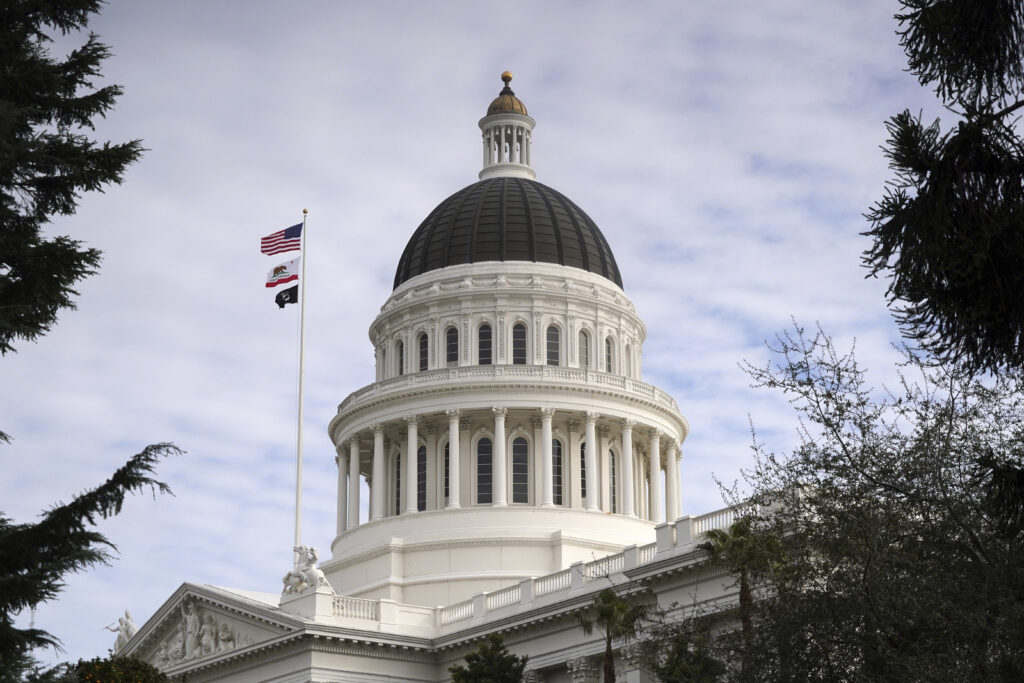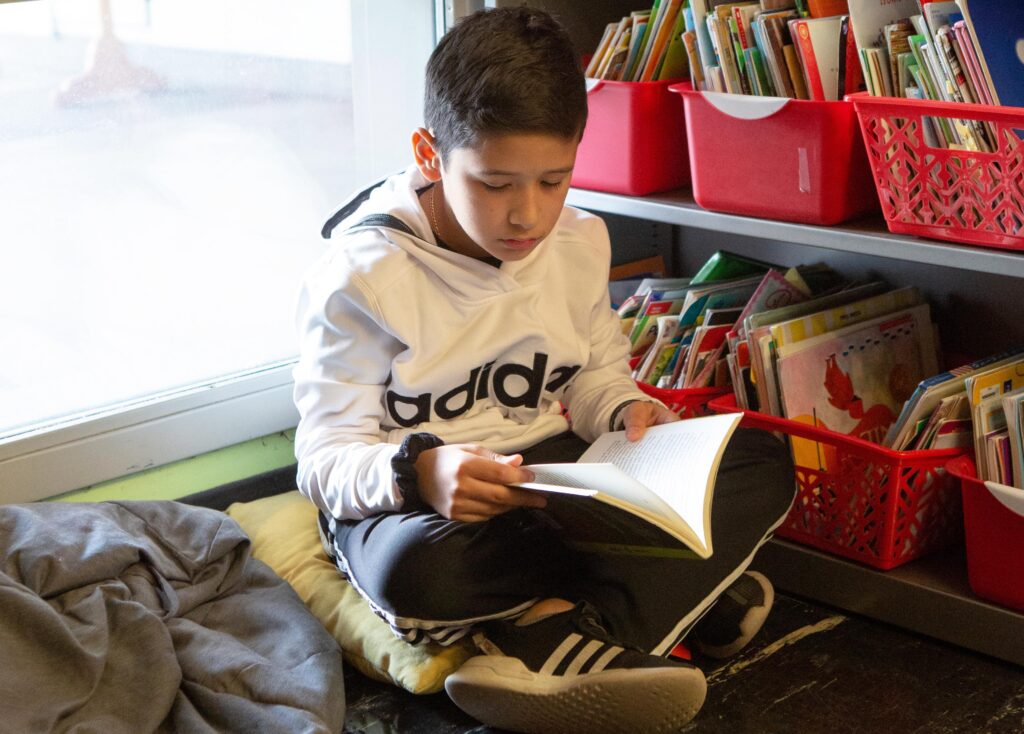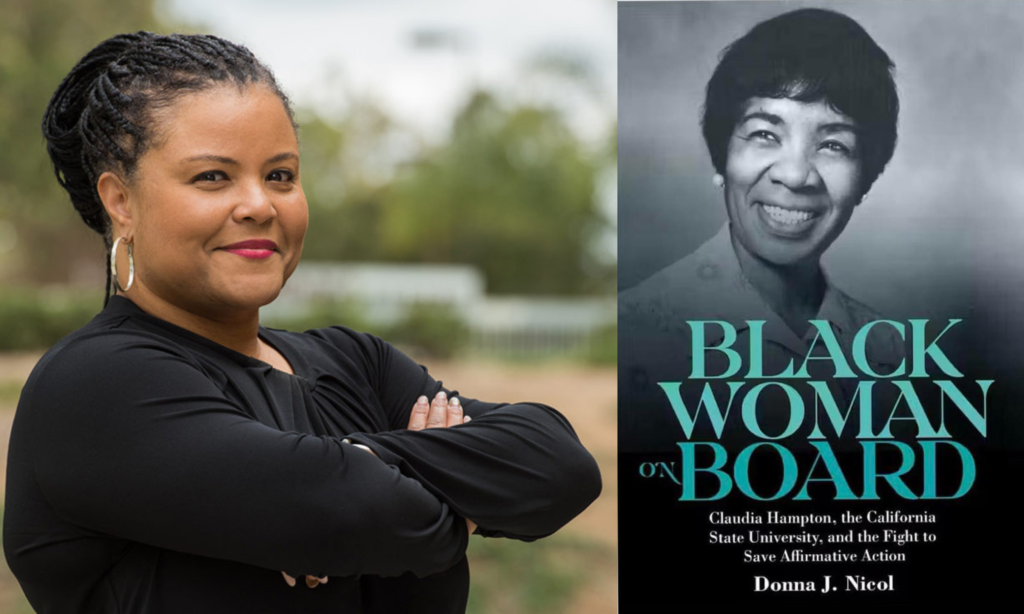
After years of preparation inside and outside the state Capitol (shown), California has launched a website that gathers all sorts of education and career data in a single, searchable place.
Credit: Kirby Lee / AP
Higher revenues than Gov. Gavin Newsom and legislators predicted will likely produce a modest increase in funding in 2025-26 for TK-12 schools and community colleges, the Legislative Analyst’s Office projected on Wednesday.
The growth in revenues will also pay down a big portion of the state’s debt to education, with enough to sock away money into a rainy day fund for education that was depleted by the Legislature last year. But at the same time, a rarely invoked constitutional provision would deny schools and community colleges billions in funding that they would otherwise get, the LAO said.
The LAO’s annual state budget forecast is the first hint of how much funding schools and community colleges can expect when Newsom releases his budget in early January. How to spend the new funding amid pressure from competing interest groups — always a challenge — will be up to Newsom and the Legislature.
The LAO is projecting only a $1.5 billion increase (1.3%) for 2025-26 above the $115.3 billion approved in June for 2024-25 for Proposition 98, the quarter-century-old voter-approved formula that determines the minimum amount that must go to schools and community colleges. It comprises 40% of the state’s annual general fund.
But combined with an additional $3.7 billion freed up from expiring one-time costs and Proposition 98 adjustments, schools and community colleges can anticipate a 2.46% cost-of-living-adjustment for programs like the Local Control Funding Formula, the primary source of spending for TK-12. That will leave $2.8 billion in new, uncommitted spending. (The LAO suggests using a piece of that to wipe off $400 million in “deferrals,” late payments to schools that will be carried over from year to year unless paid off.)
Even though California’s economy has been slowing and the unemployment rate is higher, the 2024-25 Proposition 98 level is projected to be $118.3 billion, $3 billion more than the Legislature set in June; however, none of the increase will go to the pockets of school districts and community colleges. All of it, by statute, will be deposited into the Proposition 98 reserve account unless the Legislature overrides the law.
“I think that’s the element of our forecast that will surprise school groups the most,” said Ken Kapphahn, principal fiscal and policy analyst for the LAO. “I think many people do understand revenue is up in 2024-25. What isn’t as well understood is that the increase is going into the reserve and not available for them.”
“Building reserves is a good use of one-time funding,” he said. “We just saw how valuable those reserves can be when we went through $9.5 billion from the reserve. That was a big reason why the state didn’t have to cut ongoing school programs last year. In some ways, making a deposit makes sense right now; it’s an opportunity to rebuild that reserve.”
A big increase in tax receipts from capital gains income, which governs when and how much is deposited into the rainy-day fund, is the source of the money, the LAO said. Much of it is from stock options and reflects the wealth gap between well-compensated high-tech employees and other workers.
There’s also expected to be enough money by the end of 2024-25 to pay off nearly two-thirds of the $8 billion debt to schools and community colleges in 2022-23, caused by a revenue shortfall resulting from a short Covid-19 recession.
The Proposition 98 debt to schools is called a “maintenance factor.” Repaying it becomes the top state priority once more revenue becomes available — to the extent of capturing 95 cents of every new dollar in the general fund. The LAO projects that the maintenance factor will be lowered $4.8 billion this year, leaving $3.3 billion unpaid.
Proposition 98 is a stunningly complex formula, and the higher 2024-25 funding level will add a new twist. Usually, the Proposition 98 level from one year becomes the base funding level for the next year. But the increase in 2024-25 is expected to be big enough to trigger a rarely used “spike” protection, limiting the increase in 2025-26; without that restriction, Proposition 98 would be $4.1 billion higher than LAO’s forecast.
The rationale behind its adoption is to create stability in the non-Proposition 98 side of the general fund. Education advocates view it differently, as a way to fund schools at the minimum constitutionally required level — and no more.
“The maintenance factor payment increases Prop. 98 on an ongoing basis. On the other hand, the state is making the spike protection adjustment to slow the growth in Prop. 98,” said Kapphahn. “Both of those different formulas are part of the constitution, and they happen to be working in opposite ways.”
The “spike” clause has been triggered several times before during years of unusual growth in Proposition 98. What would be different this time is that 2025-26 funding of $116.8 billion would be $1.5 billion less than LAO’s projection for 2024-25.
TK-12 revenue is tied to student attendance, which has been declining in most districts. Attendance statewide fell by nearly 550,000 (9.3%) from 2019-20 to 2021-22 during the height of the Covid pandemic, and has recovered gradually. The LAO expects overall attendance to increase slightly by 12,000 students (0.2%) in 2024-25 and 26,000 (0.5%) in 2025-26 due to the expansion of transitional kindergarten for 4-year-olds. The LAO projects attendance will drop each of the three years after that by about 60,000 students primarily because of a smaller school-age population due to lower births.







